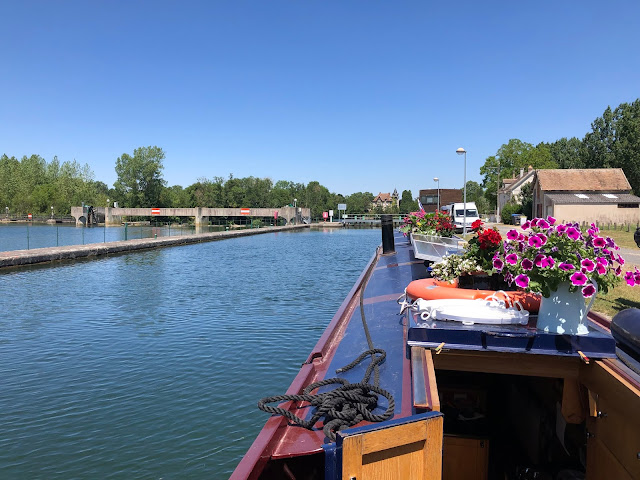The canalised river Yonne extends from Auxerre, where it joins the Canal du Nivernais, to its confluence with the Seine at Montereau, a distance of 108km through 24 locks. The locks on the River Yonne are all 92 metres long by 10 metres wide.
The paddles and gates are operated automatically via a control panel that can only be used by a VNF éclusier (lock keeper). VNF stands for Voies Navigable Francais. To use the lock you have to call the éclusier on the VHF channel displayed on an information board before the lock is reached.
Over the first 22km, down to the junction with the Canal de Bourgogne, it forms part of the Nivernais route, a cross link between the Bourgogne and Bourbonnais routes from Paris to Lyon.
The rest of the waterway forms part of the Bourgogne route, the shortest but most heavily locked of the three main routes across central France. The Yonne is an attractive cruising river, with huge locks but little commercial traffic (except in the lower reaches). The river is avoided by lock-cuts at three places: Gurgy, Joigny and Courlon.
History – The river was a free-flow navigation through the ages, until Poirée successfully tested in 1834 (near Clamecy) his design for a needle weir. The design was improved by Thenard five years later, and the Government then approved works to canalise many rivers on this basis. One weir and lock were built on the Yonne after 1840, but most of the works were conducted from 1861. The locks were enlarged to Freycinet standards in the late 19th century, then again to their current dimensions after World War II.
There are nine locks on the upper section between Auxerre and Migennes. There are 17 locks on the lower section from Migennes down to the confluence with the River Seine at Montereau.
Auxerre to Migennes
Écluse 5 - Monéteau (no pictures)














































































































No comments:
Post a Comment